

- Call 908 543 4390
- Email
- Dr.Joni Redlich PT,DPT


by Katherine Maloney, DPT
With it officially being Fall, I thought it would be fun to talk about some of our (the Kid PT Staff’s) favorite fall activities! Not only will we be sharing our favorite fall activities but where you can go do them too.
 Joni did not have to think hard when I asked about her favorite Fall activity: Creature Fest at Duke Farms in Hillsborough! This is one of the few times that the farm is open at night and they have an incredibly interactive nature walk set up where you can see different plants and animals around the farm.
Joni did not have to think hard when I asked about her favorite Fall activity: Creature Fest at Duke Farms in Hillsborough! This is one of the few times that the farm is open at night and they have an incredibly interactive nature walk set up where you can see different plants and animals around the farm.
 Wendy, one of our amazing Physical Therapists, says her favorite Fall activity is simply to be outdoors. She loves the changing leaves and the crisp, cool air. Her favorite place to go for a nature walk this time of year is her hometown, Clinton, NJ. She says everyone needs to check out Clinton in the Fall! And she said they also have a really good haunted house for those who are not faint of heart.
Wendy, one of our amazing Physical Therapists, says her favorite Fall activity is simply to be outdoors. She loves the changing leaves and the crisp, cool air. Her favorite place to go for a nature walk this time of year is her hometown, Clinton, NJ. She says everyone needs to check out Clinton in the Fall! And she said they also have a really good haunted house for those who are not faint of heart.
 Callie told me that her favorite thing to do this time of year is to go pumpkin picking! She loves to pick out her own perfect pumpkin to decorate her house with. She says she goes to Happy Day Farm in Manalapan. This farm also has sunflower picking and a pumpkin festival! You can definitely make a whole Fall themed day of going to Happy Day Farm!
Callie told me that her favorite thing to do this time of year is to go pumpkin picking! She loves to pick out her own perfect pumpkin to decorate her house with. She says she goes to Happy Day Farm in Manalapan. This farm also has sunflower picking and a pumpkin festival! You can definitely make a whole Fall themed day of going to Happy Day Farm!
 Stephanie has also recently joined our team as an intern. She is a senior in high school and looking to go to PT school in the future! Her favorite fall activity is going apple picking at Melick’s Town Farm and Apple Orchard in Oldwick. She loves to use the apples she picks in all her Fall snacks and desserts!
Stephanie has also recently joined our team as an intern. She is a senior in high school and looking to go to PT school in the future! Her favorite fall activity is going apple picking at Melick’s Town Farm and Apple Orchard in Oldwick. She loves to use the apples she picks in all her Fall snacks and desserts!
 My favorite fall activity is going to a local Fall Festival; I love pumpkin picking, doing the corn maze, seeing farm animals, and getting delicious Fall flavored treats! Bonus points if I can bring my adorable doggie with me. Living in Virginia we had several options, but with moving to NJ this year I am planning to check out the Maple Leaf Farm Fall Festival.
My favorite fall activity is going to a local Fall Festival; I love pumpkin picking, doing the corn maze, seeing farm animals, and getting delicious Fall flavored treats! Bonus points if I can bring my adorable doggie with me. Living in Virginia we had several options, but with moving to NJ this year I am planning to check out the Maple Leaf Farm Fall Festival.
What is your favorite thing to do this time of year? We would love to hear all about how you celebrate this new season!

by Anjali Fortna, PT, DPT
What is Tummy Time?

“Tummy time” is the time during the day that an infant spends on his or her tummy. Because it is typically recommended that a baby sleep flat on her back during all naps and overnight sleep, it is important to give baby time in other positions to help develop symmetry and strength in all
directions.
There are many benefits to tummy time that go beyond just changing position. Spending time on their stomachs is crucial to babies developing strong neck muscles to lift their heads against gravity, and begin to develop the ability to lift their heads to look at people or objects in their environment. In the womb, babies grow in a position of flexion, meaning their necks, backs, hips, knees — everything — are bent forward. Developing range of motion in the opposite direction, or extension, is an important part of developing strength and symmetry for everyday activities. Tummy time is a big part of this development. It even helps the spine develop its
shape and change from the completely flexed forward infant spine to the childhood and adulthood spine that has curves at the neck and low back. All of this develops by working against gravity.
Another big benefit of tummy time is the prevention of a flat back of the head. When babies spend too much time on their backs beyond just when they are sleeping, their soft heads can become flattened on the back (brachycephaly), or the sides (plagiocephaly). Changes in head shape can lead to shortened or tight neck muscles, asymmetrical preference for vision and motor development, and may even affect the way a bike helmet fits when a child gets older. Working tummy time into baby’s every day can help prevent irregular skeletal and gross motor development.
So how is tummy time done? Tummy time should always be supervised until the baby can confidently and consistently roll from tummy to back by himself. While some babies enjoy playing on their tummies, others immediately fuss and try to avoid this position. Babies who
have colic or reflux may especially resist tummy time. Ideally, babies should spend 60 minutes per day on their tummy. If the baby enjoys being on his stomach, this can be completed in large chunks of time with the baby flat on his stomach on the floor, with a toy or parent in front of him to encourage him to lift his head and work his muscles against gravity. If baby doesn’t like tummy time or becomes fussy easily, it can be done in shorter bouts of just a couple minutes at a time. Some parents choose to work in small amounts at regular intervals during the day, such as just after a diaper change.
If the baby does not tolerate being flat on her stomach at first, there are some alternative methods of working in tummy time. Some babies will tolerate being in a partially flat position on their stomachs, such as propped with their chest over a boppy pillow or small wedge. Other babies will tolerate lying on their stomachs against their parent’s chest while the parent leans back on the couch. These positions are still considered tummy time because the baby must use her extensor muscles on her back to lift her head and trunk against gravity.
Overall, tummy time should be a positive and playful part of the day to help baby develop strength, symmetry, and new ways to interact with her environment. If you have concerns about your baby’s tolerance of tummy time, movement preferences, or developing body, a pediatric physical therapist can help assess your baby’s motor development and come up with strategies to make tummy time a regular and fun part of the day!
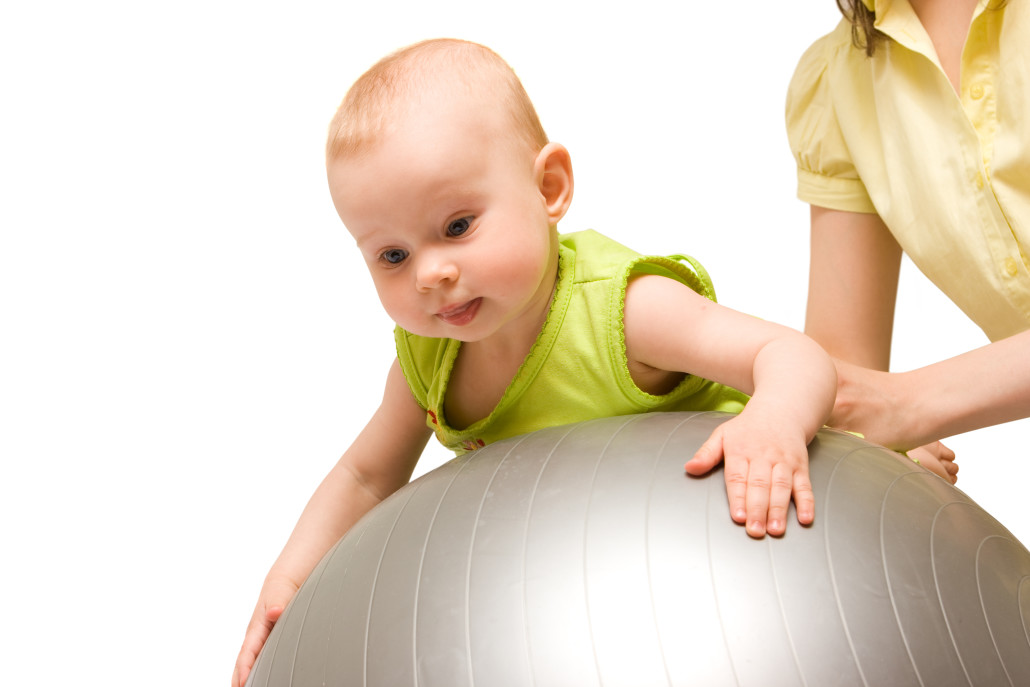
by Wendy Canary, PT
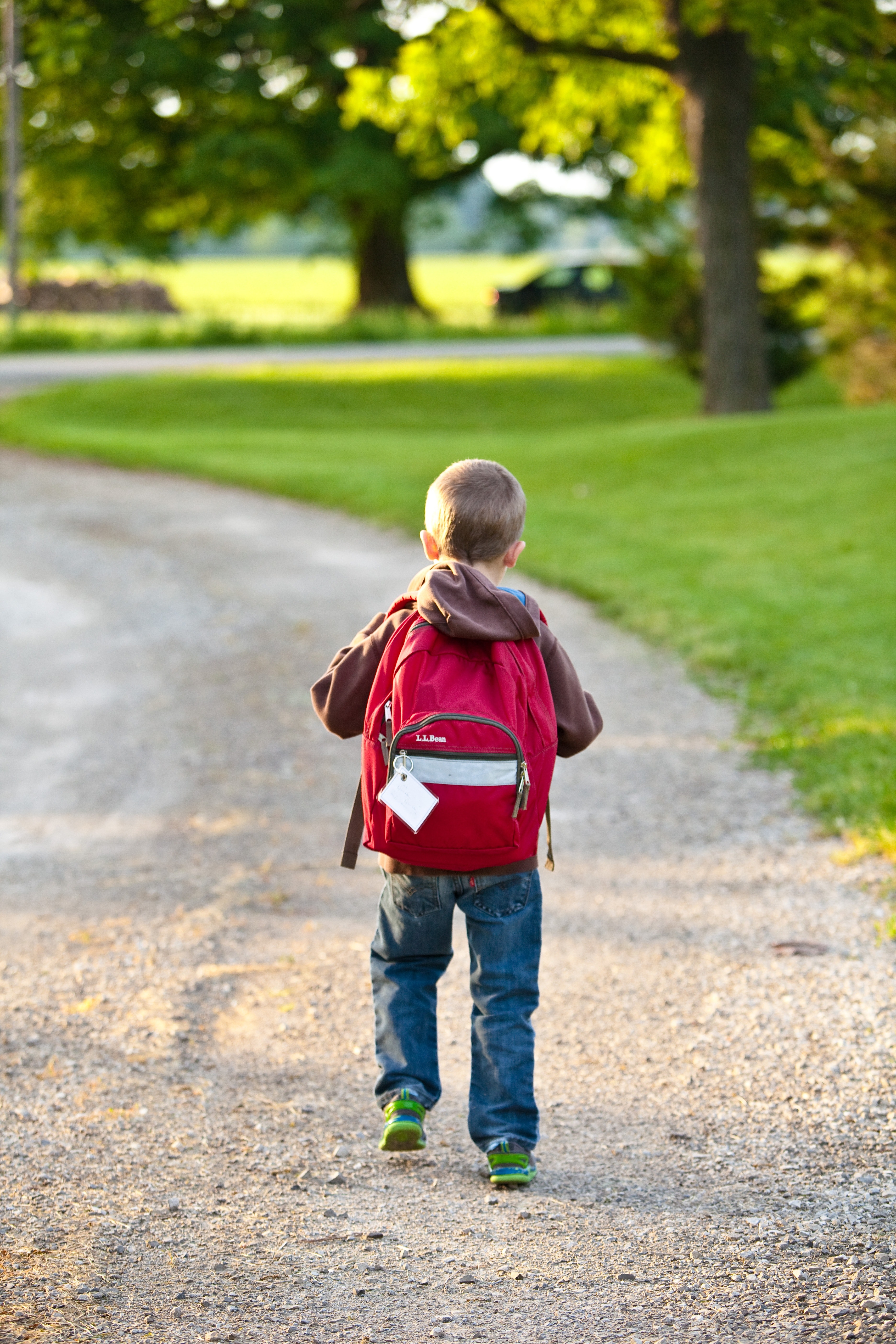 “A parent’s job is never done!” SO true! A parent changes ‘hats’ all day long…chef, chauffeur, calendar keeper, housekeeper, personal assistant… the list of all the things we do in a day can go on and on. One of the most important roles we have as parents is teacher. Children watch our every move and learn by example. I think we have all seen a piece of ourselves when our toddler repeats a phrase they have heard from us or our child’s mannerism resembles our own. That can be humbling at times! Our teaching is sometimes more direct and changes as our children grow and learn and gain independence. We first teach children to hold our hand to cross the street, then to look both ways, and eventually give them the freedom to walk to the school bus or a friend’s house alone. Although not always on the forefront of our minds with these teachings, the truth is all of these skills learned at home will lead to the independent, self reliant person your child will be in the future.
“A parent’s job is never done!” SO true! A parent changes ‘hats’ all day long…chef, chauffeur, calendar keeper, housekeeper, personal assistant… the list of all the things we do in a day can go on and on. One of the most important roles we have as parents is teacher. Children watch our every move and learn by example. I think we have all seen a piece of ourselves when our toddler repeats a phrase they have heard from us or our child’s mannerism resembles our own. That can be humbling at times! Our teaching is sometimes more direct and changes as our children grow and learn and gain independence. We first teach children to hold our hand to cross the street, then to look both ways, and eventually give them the freedom to walk to the school bus or a friend’s house alone. Although not always on the forefront of our minds with these teachings, the truth is all of these skills learned at home will lead to the independent, self reliant person your child will be in the future.
When our children are small, self-care skills are a big part of our everyday teachings. The tasks of getting dressed, tying shoes, brushing teeth, using a fork, etc. are things we do everyday and ultimately want our children to be independent with. The challenge is they are repetitive and often fall in times when our ‘adult agenda’, does not allow for the pace of a child’s learning. We need to get out the door so it is faster to put our child’s shoes on. There is a school bus to catch so in the interest of time, we dress our child. It has been a long day and everyone is exhausted, so to keep things moving along, you brush your child’s teeth. Before I move on let me say— I GET IT! My children are grown but I remember all too well the exhaustion at bedtime as I watched my children brush their teeth or feeling agitated as I tried to move out the door and the kids never seemed to be moving at the pace I wanted. So I know the struggle is real! 
The challenge for parents is finding ways to promote these self-care skills without creating more stress in our family life. But if we can find ways to separate the learning from the time crunch, it can become more positive experience for all. Bringing play and learning together is always a good place to start! For example, pretend play is a great way to practice dressing skills using dress up clothes and role-playing with your child. Another fun way to engage our children is to make it into a race. Who can put their shoes on first? Can you put your shirt on before the timer goes off? Whatever the game is you choose, your child will be likely to enjoy your playful spirit and will be learning a new skill along the way!
Of course each child is different in their style of learning and their desire for independence. Some will figure things out without with very little input while others may need more assistance and things broken down into components for success. For the latter children, instead of saying ‘put on your shirt’, you could help them put the shirt over their head and then ask them to push their arm through the armhole. Or you could ask your child to move their toothbrush in their mouth back and forth over their teeth and then afterward you could help them with hand over hand assistance to assure they properly brush their teeth. For a child who is more resistant to doing things alone, by making each task smaller into components, they experience success, which will add to their confidence to try each additional task. With your support and encouragement, your child will master each part and will soon be independent!
Before ending, lets discuss shoe tying. This task can be daunting for many parents. If we think about the ideas from above of a non-stressful time and breaking things into components, it can be a skill that can be fun to learn. A child can practice tying a shoe lace around a favorite stuffed animal, on a shoe tying board book or a homemade device. I learned with a shoelace strung through the lid of a coffee can. I can still remember sitting on the floor of the kitchen as my mother cooked practicing on that can. I never once thought I HAD to learn this but instead I was thrilled with this fun activity my mom had given to me that day. I am sure I did not learn in one day but learned by parts, but my memory of learning is a happy one. So consider ways you can start to introduce this to your child in a fun way and remember to follow up with replacing the Velcro shoes with tie sneakers!
Watching our children develop new skills and gain independence is exciting and best yet, with every task they learn, it makes our ‘to do list’ a little smaller. It can be a challenge in the business of life and when a child has little motivation to learn, but with creativity on your part, you can make the teaching fun. So look for those moments where you can use play to practice a new self-care skill and then sit back and watch the learning unfold! And one day your child will proudly say to you, “I did it all by myself!”

While we soak up the last bits of summer, we can also take steps to help us all ease into the school year. The kids are used to a much more relaxed routine and it is easier to take steps now to get the school year routines going than to jump back in all at one time.
1. Bedtime Prep 
Have your kids been staying up till 10 every night? If so, try moving bedtime up by 15 minutes each day or every couple of days, till it is where you need it to be for the school year.
2. School Lunch Containers
Prep the school lunch containers now so you’re now stressing looking for lids for bottoms once its time to make lunches again.
3. Meal Times 
Get back in a routine for meals and snacks so that once the kids are back in school, their stomachs are already used to the timing for meal during the school year.
4. Paper Plan
As much as a lot of paperwork has gone to technology, the start of the year always drowns parents in paperwork. Have a plan of where to put everything and how you’re going to organize it all so it doesn’t feel as chaotic.
5. Bedtime Routines
Start getting back into your bath, toothbrushing and book routines now so when your child is wiped from the start of the school year, they know what to expect at night.
6. Homework Plan 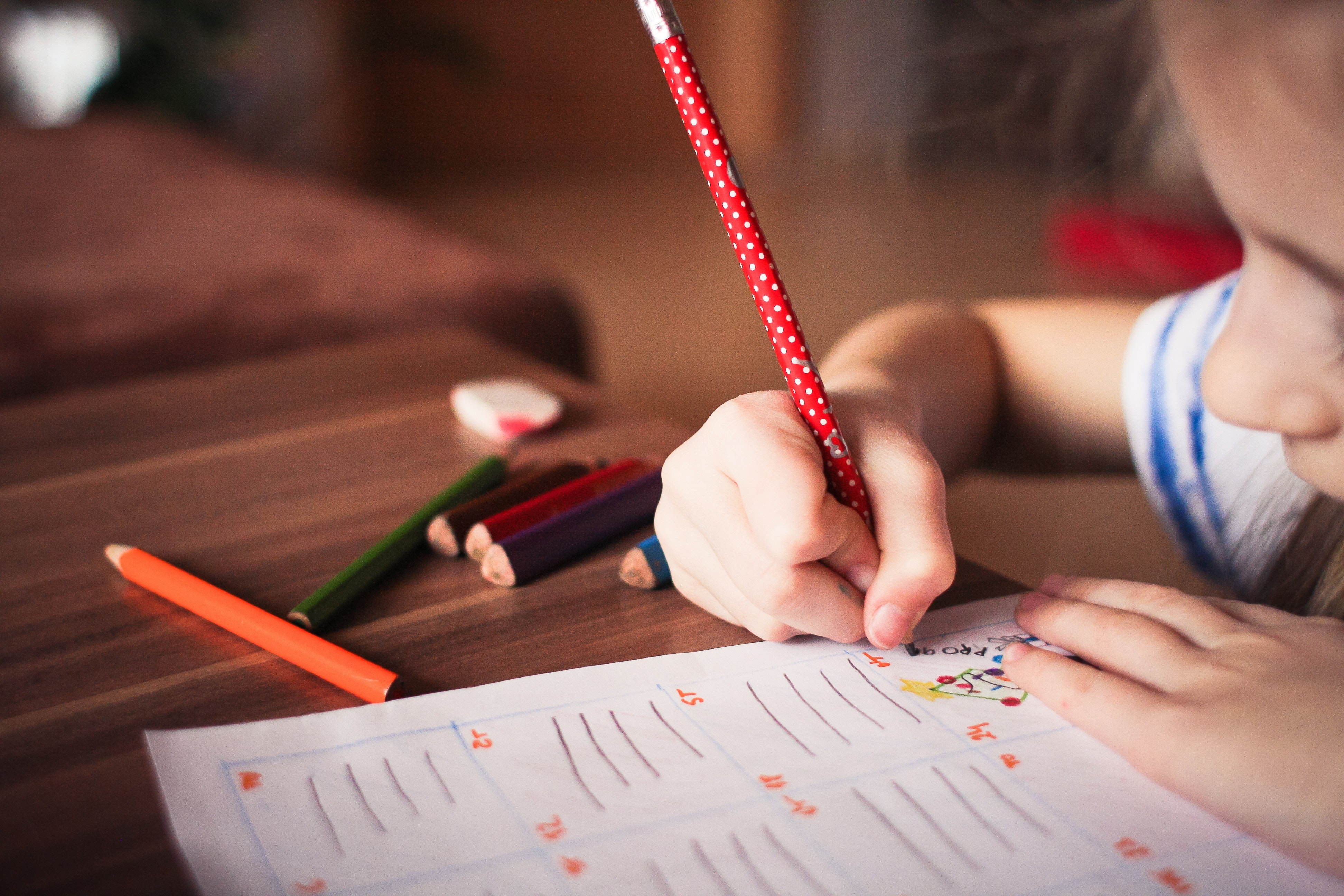
What works best for your family? Will homework be done right after school or is it best for your child to have a break first? Come up with a schedule that will work best for your family.
7. Homework Supply Caddy
For the younger kids, it can be helpful to have one container that holds crayons, pencils, scissors and glue sticks so they will be ready to go.
8. Back to School Shopping
Choosing the picture on a folder or notebook or a favorite pencil case can make the first day of school with new supplies much more fun! Let your child find ways to personalize their supplies.
9. Be Mindful
All the excitement of going back to school can be an anxious time for many children. Talk with your child about strategies to stay calm when they are feeling this way. Open those lines of communication, acknowledge those big feelings and practice calming strategies together.
10. Activity Plan 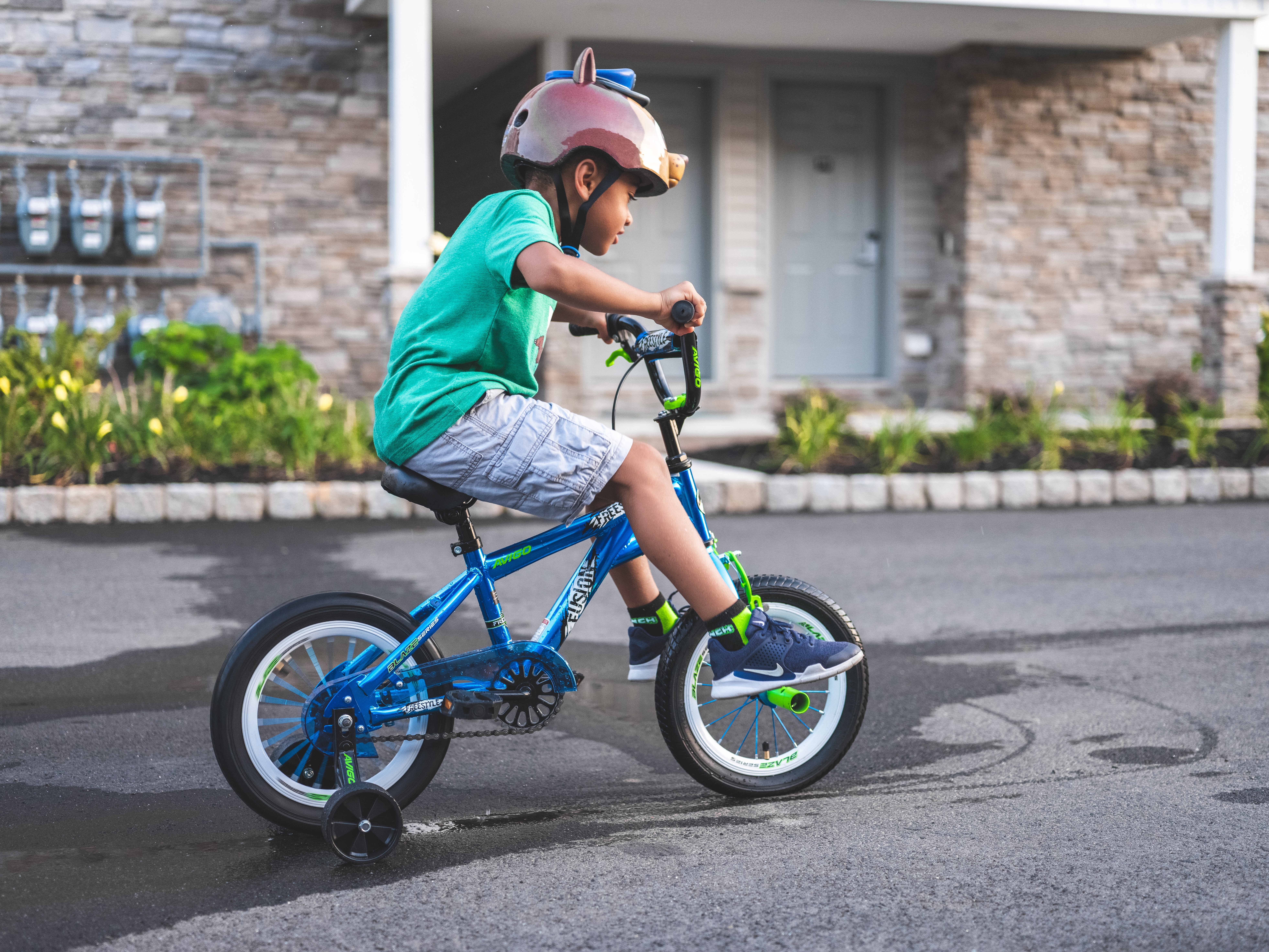
The new school year means a lot less physical activity compared to summertime for most children. Come up with ways to build movement into the day! It can be structured after school activities, play dates at the park or an after dinner walk around the block.
The new school year brings a lot of changes for both children AND adults. Most importantly, lets all support each other to begin another successful exciting year together!
by Wendy Canary, PT
School is over and summer days are in full swing! These months will make childhood memories of endless days, free time and fun! Summer playtime is important not only for decompressing and relaxing but also for development. Outside play builds up strength, coordination, balance and endurance. Let’s look at some fun ways to set up free playtime for children to explore through play.
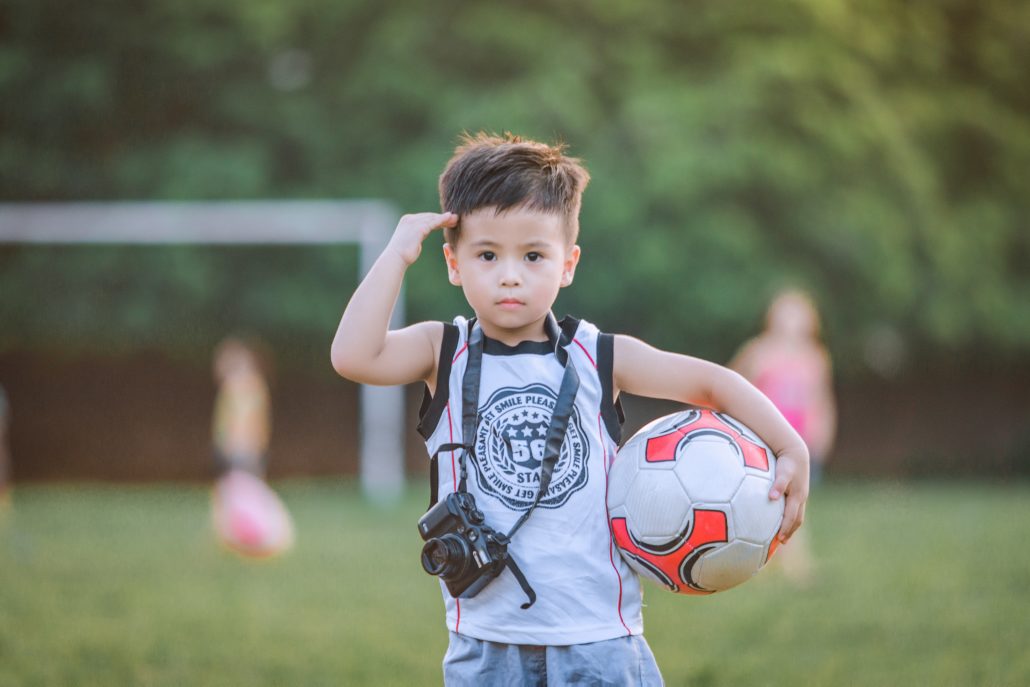
Play Ball! Ball games lead to eye hand coordination, balance and endurance. Kids love to explore with ball games and chasing a rolling ball is a great way to get our kids up and moving! Play catch. Target throw at a can perched on a wall or bench. Play a game of kick ball. Hit a beach ball or balloon with a racquet or your hand and count how many hits you get before it falls to the ground. Whatever the game, ball play will lead to new skills and coordination all while having fun!
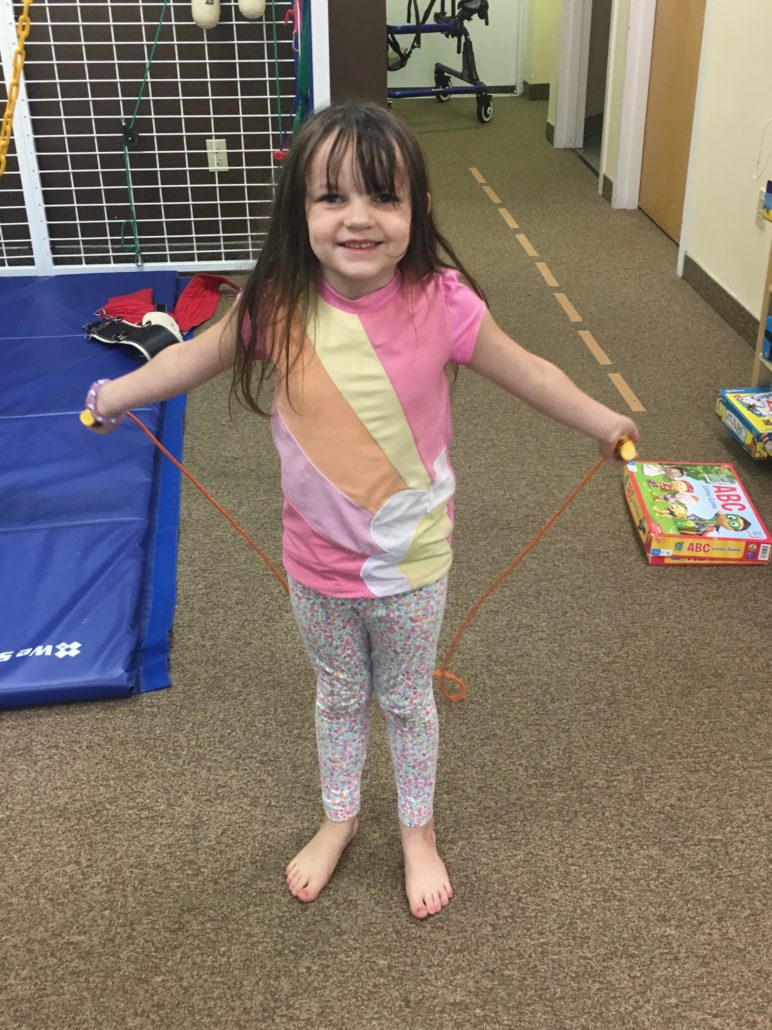
Jumping Rope! You can use a long rope that is turned for your child with a song to keep the rhythm and add to the fun! If there aren’t two people to turn the rope, tie one side to a tree or other stationary object. Let your children work on their coordination by being the jumper and the rope turner. A single person jump rope is another wonderful way to work on coordination, bilateral skills, endurance and perseverance in learning a skill. Jumping rope takes practice but once mastered will bring hours of fun!
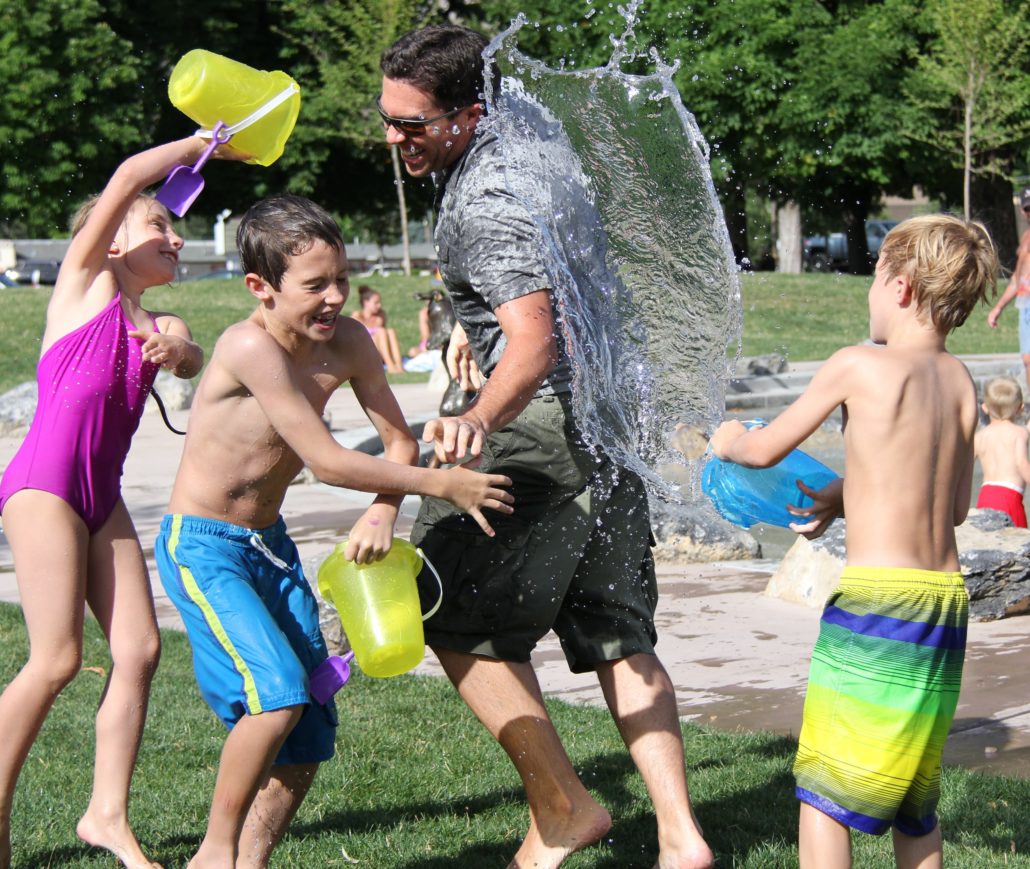
Water play! Hot days of summer can make outside play less appealing, but adding water to it changes everything! Turn on a sprinkler, squirt water toys, “paint” with a bucket of water and paintbrush, pour water through funnels, into different size cups, water toys etc. to explore through water activities. Any water play you think of kids will love!
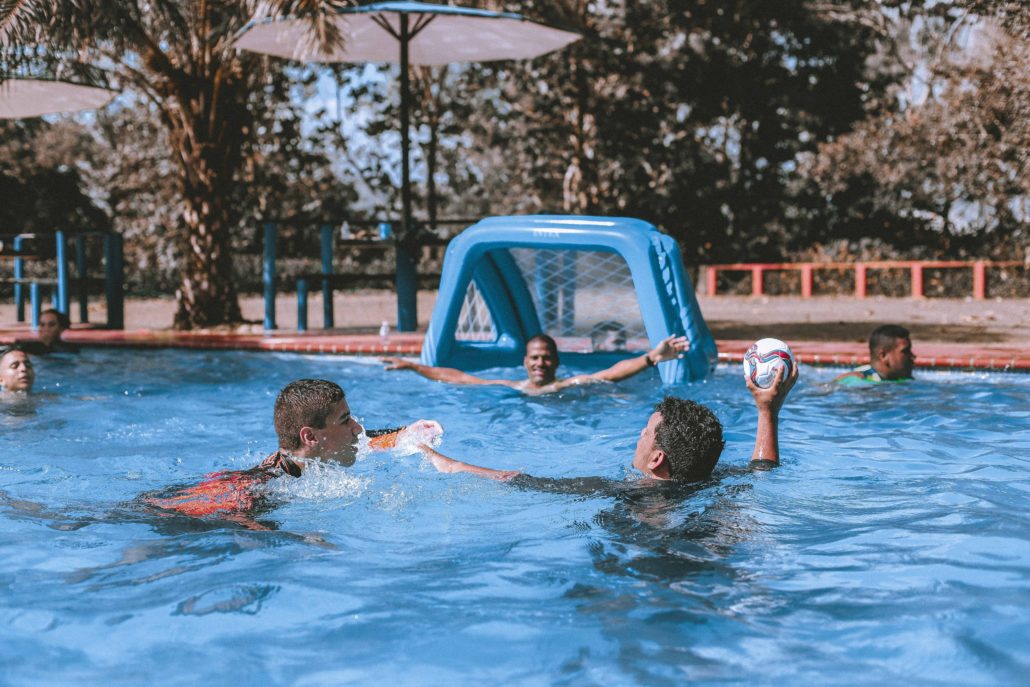
Pool time! Swimming is a great way to exercise, play and learn a life saving skill. Children love to play in the water chasing water balls, diving sticks or playing games in the water like Marco polo, underwater tea parties etc. Just remember, children need CONSTANT supervision when they are in or near a pool to prevent drowning. So take your towel and sunscreen and head to the pool to cool off as a family!

Grab a blanket! Lay out a blanket in your backyard, park or beach. Bring a picnic. Read books. Lay back and search for shapes in the clouds. Take a walk and collect things from nature and bring them back to the blanket to share them with others. If it is evening, count the fireflies and see if you can catch one on your hand. The picnic blanket will become a place to relax and enjoy your time together outdoors!

Driveway Play! Asphalt can be a great place to explore! Take out the sidewalk chalk and watch creations of hopscotch, artwork and written messages change the look of your driveway –at least until the next rain! Find a curb and walk on it like a balance beam. Bring out ride on toys, bikes, skateboards, skates and scooters and let your child explore. Always remember to wear a helmet when riding on any of these toys! It takes practice and often patience from a parent to master these skills but the freedom and coordination gained when mastered will make everyone proud!
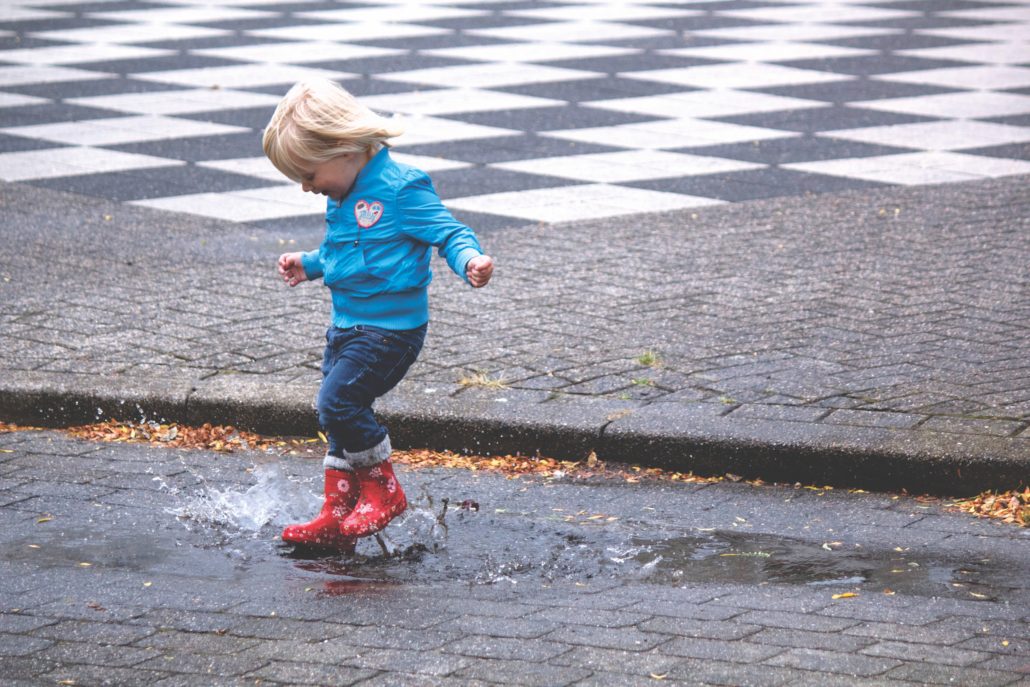
Rainy Day Play: Go ahead and go outside! Take a walk with umbrellas, jump in a puddle or two, look for worms, watch the rain running down the sewer drains and explore the world in the rain! When back inside you can find an online video of kids’ movement or yoga. Animal walk around the house like a bear, crab, snake, frog etc., Create your own exercise class with jumping jacks, planks, balancing on one foot or perhaps have everyone choose one exercise to teach to the others. And you can also bake a treat, make a craft or just curl up with a book on the rainy day!
Summer days can come and go quickly. Carving out the time for active free play can promote children exploring their abilities, interests, and their world. These moments of simple play will lead to skills and memories that will last long past the last day of summer!
Check out my video on working smarter, not harder! This approach works whether a child is learning how to sit, stand or hop. Any time there is a difference in strength or ability between the two sides of the body, it is a window in to make change.
To make change happen much FASTER, we want to have perfect practice, where the child is getting accurate sensory information and good motor control. The best way to accomplish this is to practice the EASIER side, but work it HARD!
This video is an example of the concept, but just ask us and we can show you how it applies to your child.
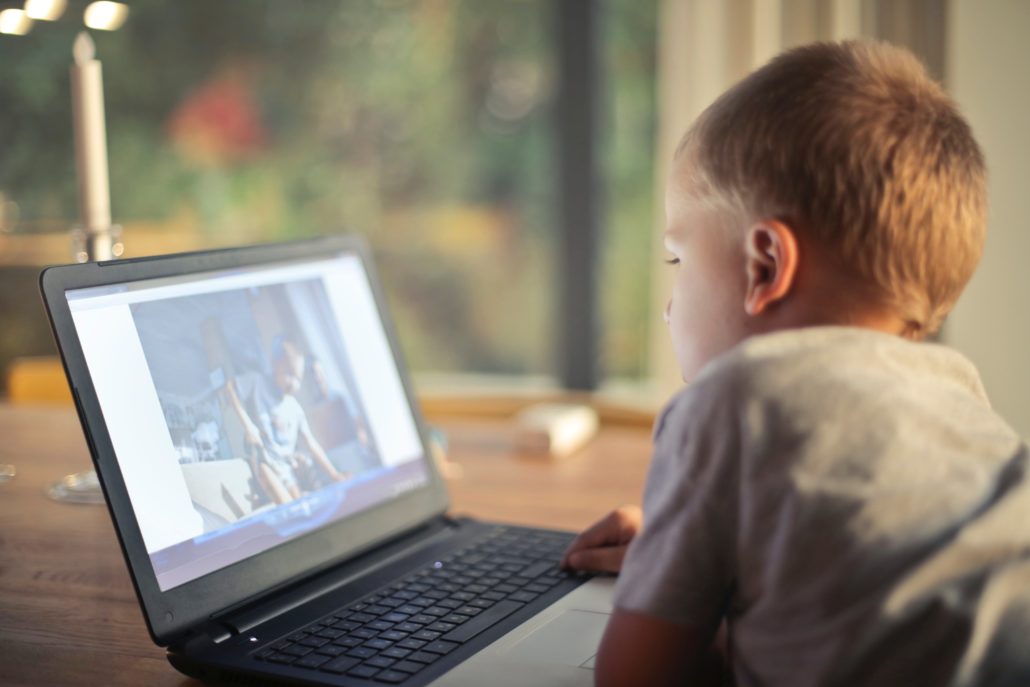
In a world of cable television, Netflix, and Youtube, it’s easier than ever to find programming for children of all ages. But how much TV is too much TV for kids? In April, the World Health Organization (WHO) released new guidelines for screen time and sedentary behavior for kids under five. The recommendations may have you rethinking a rainy day movie marathon.
Let’s start with the screen time recommendations. For infants and one-year-olds, screen time is not recommended at all. For children ages 2-4, less than one hour per day of screen time is recommended. In fact, WHO recommends that children this young should not be restrained (in a high chair, stroller, booster seat, etc) for more than an hour at a time at all.
So why is all of this important? Childhood, and young childhood specifically, is a time of crucial physical and cognitive development for children. Physical activity and free play allow a baby or toddler to develop strength, balance, and coordination, as well as emerging social skills such as exploring, asking questions about the world around them, and interacting with other kids and taking turns during play. Additionally, getting in the habit of a healthy and physically active lifestyle early in life can prevent childhood obesity and associated health problems later on.
The WHO recommends that babies under one be physically active in a variety of ways several times per day, including at least 30 minutes per day of “tummy time.” For one- and two-year-olds, this increases to 180 minutes of activity of varying intensity spread throughout the day. For three- and four-year olds, at least 180 minutes of active play including at least 60 minutes of moderate or vigorous intensity play is recommended.
So what does all of this mean? Children as young as babies and toddlers need to be busy, active, and curious. Little to no screen time is recommended under age 5, and free play throughout the day and as frequently as possible is recommended. Stuck inside on a rainy day? Read a story book to your baby while she plays on her tummy, rolls, or explores. Create an obstacle course for your toddler including climbing over, under, and around pillows, tables, and toys. Go through the obstacle course with them, and let them problem solve how to get through the course. Read a book, blow bubbles, paint a picture, build a pillow fort, or put on a play. Developing healthy lifestyle habits early in life can help build fine and gross motor skills, and teach children to value healthy habits throughout their childhood and adolescence.
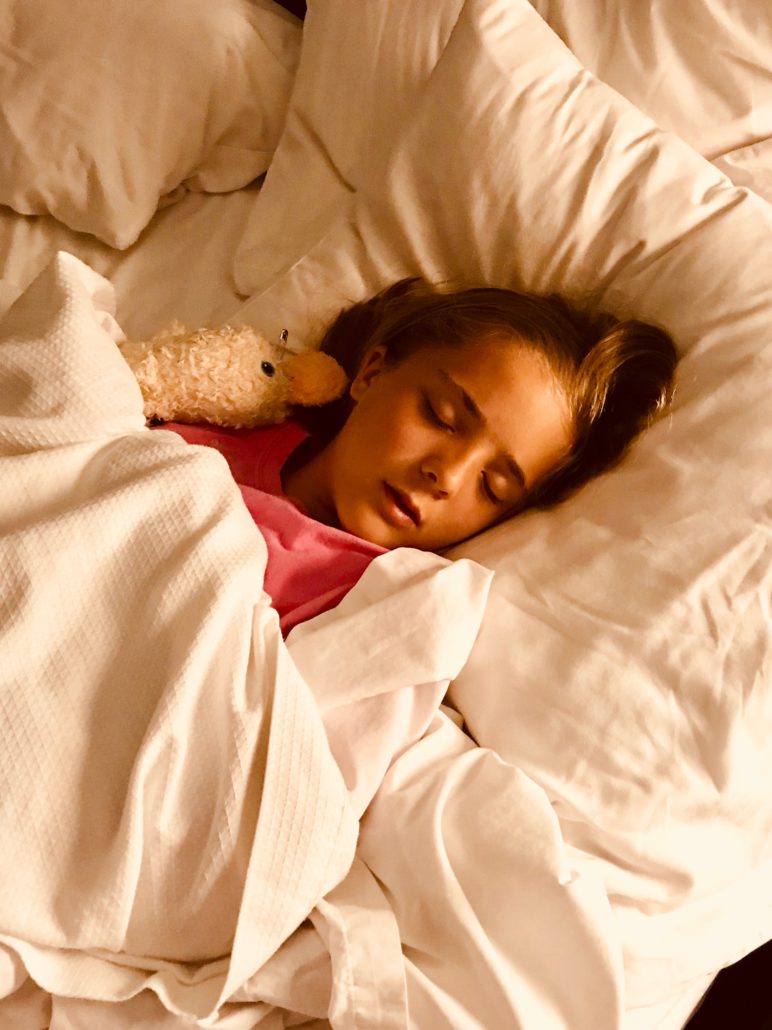
The autism spectrum refers to a set of neurodevelopmental disorders assessed by a scale of social, communication, and behavioral impairments. Children experiencing Autism Spectrum Disorder (ASD) face many challenges, including issues with their sleep which are particularly challenging.
Anywhere from 44 to 83 percent of children with ASD experience some form of significant sleep disturbance. The biggest challenges are falling asleep, staying asleep, sleep quality, and maintaining a consistent sleep routine.
Infants and preschoolers experience the highest rates of sleep disturbance, which can manifest through settling issues, nightmares, confusional arousals, insomnia, sleep apnea, bedtime resistance, sleepwalking, restless leg syndrome, and night terrors.
Why Children with Autism Suffer in Sleep Quality
There are a number of autistic characteristics that contribute to sleep disturbances in small children with ASD, according to several theories:
Theory one is that children with ASD lack discernment with social cues to tell when everyone else in the household is preparing for bed.
Theory two relates to melatonin and an amino acid called tryptophan. Levels of tryptophan, which helps produce melatonin, the ‘sleep hormone,’ can show up in lower and higher levels in children with ASD. Research also shows that melatonin is not released at the same time of day for children with ASD as with children without ASD.
Theory three is that children with ASD have a heightened sensitivity and awareness to external stimuli, meaning that more sounds and other stimuli can keep them up at night or wake them up at night.
Theory four is that anxiety can keep children with ASD up at night, since research shows that children with ASD tend to have higher levels of anxiety.
Theory five is that children with ASD can have neurotransmitter abnormalities in the brain that can cause disruptions in REM sleep.
How to Help Your Child with Autism Sleep Better
Regardless of the reason behind sleep disturbance, sleep deprivation can cause aggression, depression, hyperactivity, increased behavioral problems, irritability, learning deficits, and poor cognitive performance.
The good news is that there is research and advice on what can be done to alleviate symptoms of ASD based on these proposed root causes that contribute to sleep disturbance. See these five tips on what you can do as a parent to help your child get the sleep he or she deserves:
Instill Relaxation Techniques
Based on the anxiety theory, teaching your child how to self-soothe through anxiety-reducing techniques is paramount for quality sleep. If your child suffers from anxiety, some conventional techniques may work like reading a bedtime story or giving him or her a soothing bath. However, if typical remedies don’t work, consider relaxation techniques like deep breathing, muscle relaxation, and music therapy.
Teach your Child How to Sleep Alone
It can be tough but important to train your child how to sleep by him or herself. A child’s being able to self-soothe and fall asleep without a parent lying beside him or her is an independence milestone that gives the parent more freedom at night as well. See sleep guidelines that every parent should know.
Consider Melatonin Treatments
Remember that according to the melatonin theory, melatonin is either not released at the right time of day and/or not enough is produced due to a lack of tryptophan. The use of melatonin supplements is on the rise, but be aware of all the benefits and risks involved before trying melatonin therapy.
Create a Bedtime Routine
It’s important to make bedtime a positive experience, instead of a time of day met with dread. Create a bedtime routine for your child that he or she will look forward to. Take at least 20 minutes prior to bedtime for your child to unwind, where they know in advance it is bedtime. As with any child, regular bedtimes and wake times are key, and consistency with upholding the routine you create is everything. You can even create a picture book where you include visual cues and the sequence involved in your nighttime routine to educate your child and reinforce the bedtime routine.
Minimize External Stimuli
For children with ASD who experience a heightened awareness and sensitivity to external stimuli, it is essential that you minimize household noises and carefully monitor the thermostat to make sure your child’s bedroom remains cool. Also minimize the amount of light exposure to the room, even if that means installing blackout blinds.
Remember that each child, regardless of an ASD diagnosis, develops in his or her own time, where any differences will show up in time. Based on information available through kidpt.com, know when not to worry and when to seek extra help.
Bio: Ashley Little is a writer for the MA Sleep Institute, an organization dedicated to helping others get their best sleep each night.
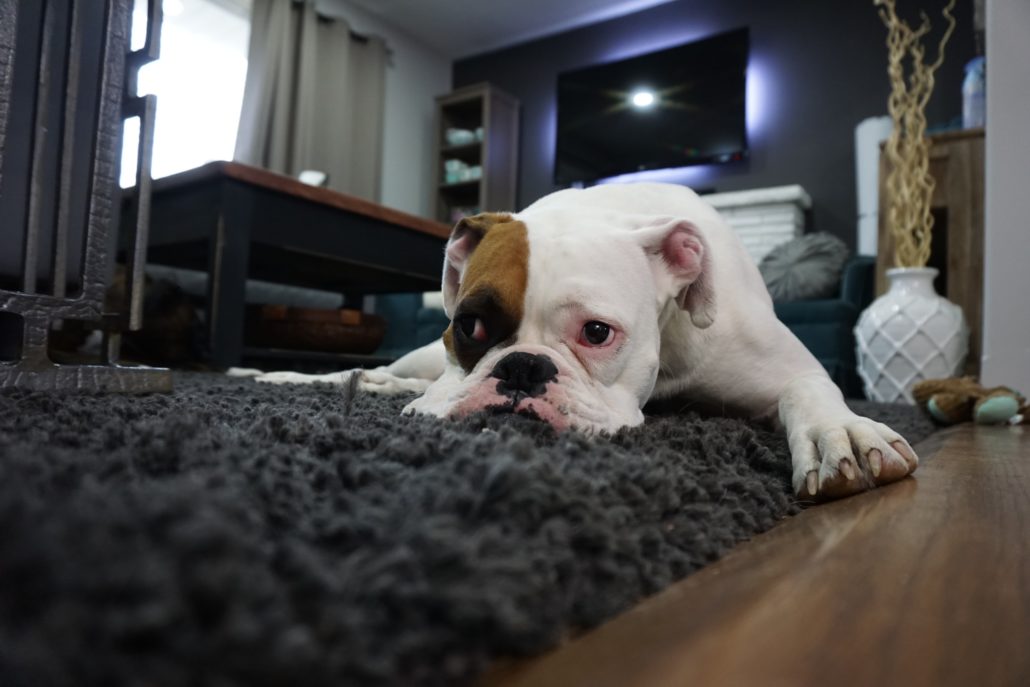
There’s one word that drives me the craziest when it comes to how adults view a child with a disability and it’s the “L” word!
What is the “L” word???
L-A-Z-Y
I have heard toddlers with low tone, students with developmental coordination disorder and teenagers with muscular dystrophy all called this ONE word.
There’s one thing these kids are NOT…is lazy.
Sometimes these kids can appear lazy to the observer. The child with low tone works really really hard just to fight gravity to stay upright, let alone figure out how to move, listen, look and think all at the same time. The child with developmental coordination disorder is trying to plan, time and sequence each movement that doesn’t come automatically like it comes to you. The teenager with muscular dystrophy has been taught to conserve both energy and muscle function in various ways.
I am a big proponent of pushing kids to work hard to reach their potential, but we have to do that while being mindful of their experience all at the same time. Everyday I work to help children develop their underlying foundational motor control and postural control (think strong root to let that tree grow tall) so that they don’t have to work so hard and can focus on much more important things like PLAYING, LEARNING and having FUN!!!
Don’t let your child be labeled lazy, but do explore therapeutic options to help things become easier and more natural! Schedule a Discovery Visit with one of our therapists today to learn some more insight into your child’s challenges and how we can help!
Spring is here despite the ever-changing weather we have been having! My younger daughter, Sophie, just mastered the 2-wheeler and now ALL she wants to do is ride her bike. So lately we’ve been out bike riding every chance we get (when its not raining, well, even in the rain sometimes!)
We often just get out there and ride while I chase after her or now that she’s really confident, we’ll go opposite directions and meet around the block. What has been awesome is that all the kids in the neighborhood start riding together. What initially was mastery of a new skill, has turned into a big social opportunity.
This is an opportunity that we don’t want any of our kids to miss out on!
I have worked with kids who need various modifications to make biking successful and fun and some kids who simply need the learning process broken down into little bites.
You know that “AHA Moment” when people learn how to ride a bike? That moment is actually when we realize a very specific response to the bike leaning to either side, and guess what? It can be taught! For our kids that need more specific instruction for learning new skills, teaching this directly can take a lot of frustration out of the process for them AND for the parents.
Some great tools for kids to learn are using balance bikes. Kids can learn to glide and practice balancing without needing to pedal. You can also remove pedals from a regular bike to accomplish the same thing!
For kids who have trouble keeping their feet on pedals, velcro straps can help with that piece.
If your child has trouble starting up the bike, practicing on a small hill will let gravity give them a jump start and with more independence than you giving it a push!
Need more help to teach your child to ride a 2-wheeler or 2 find the right adapted bike for them?
Set up a phone call with one of our therapists and let’s come up with a plan for success together. It is never too early or too late to learn! There’s nothing better than that moment of “I’m doing it! I’m doing it!”
